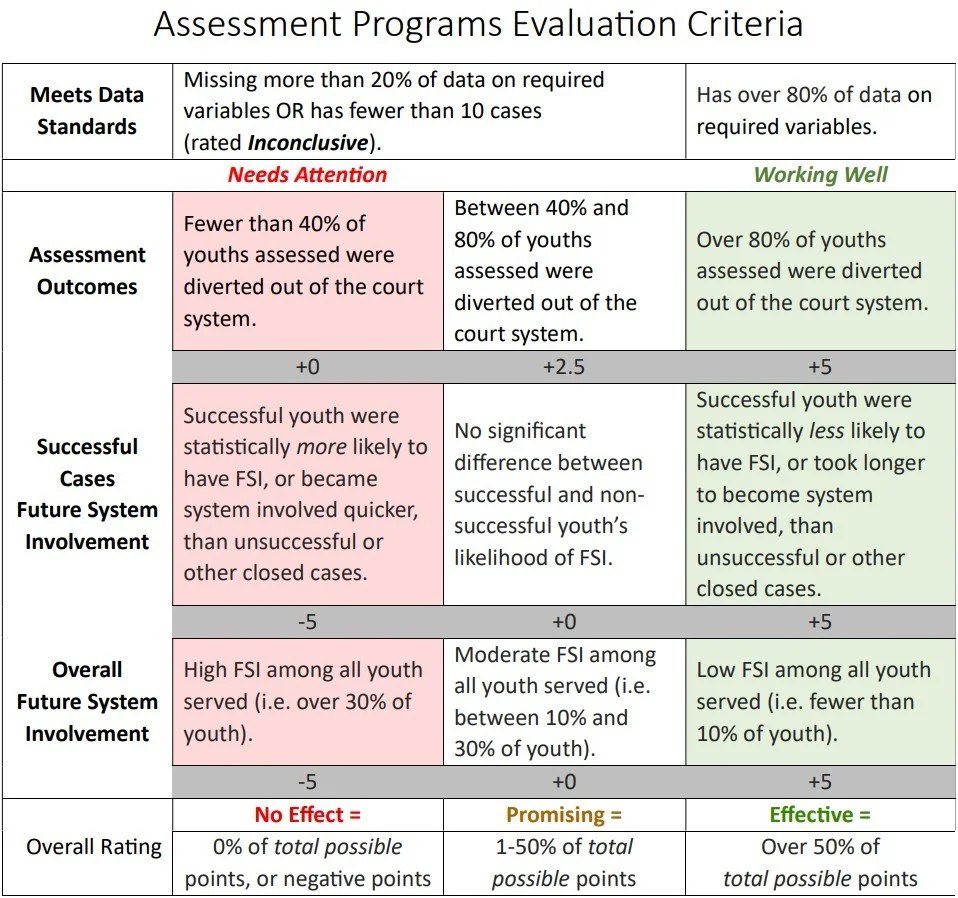Assessments
Assessment programs are a Direct Service program - a program that meets with a youth a few times to conduct a singular service, in this case, to evaluate the youth to identify mental health and/or behavioral risks and needs. Programs may use any number of different assessment tools to assess the risks and needs of the youth and provide recommendations for services for prevention and intervention. Under Assessment programs are also Assessment Centers, which are a location where staff can meet with youth to complete the evaluations, and Referral Services, which are agencies that help youth and families find services within their communities based on their assessed needs.
Evaluating Assessment and referral Programs
As part of our yearly evaluations for Community-based Juvenile Services Aid funded programs in fiscal year 2025, the JJI, in partnership with the NCC, developed evaluation matrices to categorize important outcomes for each program type evaluated. The following categories describe the important program outcome indicators for assessment and referral programs. These categories can be used to assess the standing of a program in terms of whether it is successfully applying best practices and meeting expectations or common goals for such programs.
Additional resources
JCMS Guides
Assessment Programs JCMS User Guide
Referral Services JCMS User Guide
*You can find more JCMS training materials and videos on the Trainings & Tools page.
Resources for Assessment & Referral programs
Nebraska’s Department of Health and Human Services (DHHS) provides a list of community resources, from financial assistance to parenting support, for Nebraskan communities.
The Nebraska Crime Commission has published several guides and trainings for the Nebraska Screen and Assessment Tool (NSAT), an assessment tool developed specifically for Nebraska Diversion programs. This pamphlet provides a brief guide and background for the NSAT.
OJJDP publishes literature reviews on what works for juvenile delinquency prevention and intervention, including for juvenile risk/needs assessments.
This review describes the background of risk/needs assessments (i.e., the Risk-Need-Responsivity Model) and common approaches to administering assessments.
Various guidebooks for implementing juvenile assessments in regular juvenile justice processes can be found online.
For example, from the Models for Change website, you can download the Risk Assessment in Juvenile Justice: A Guidebook for Implementation by Gina M. Vincent, Ph.D.






